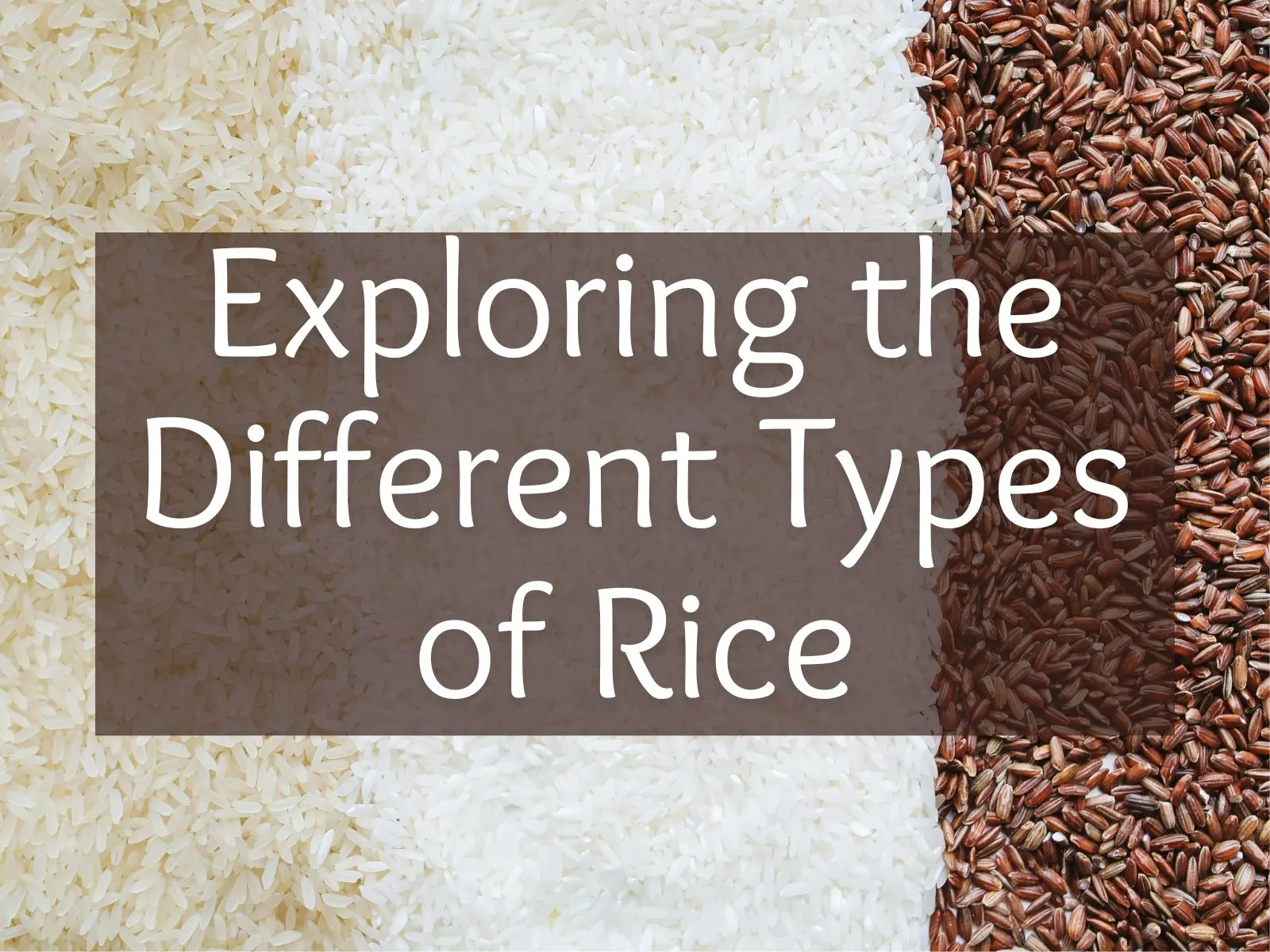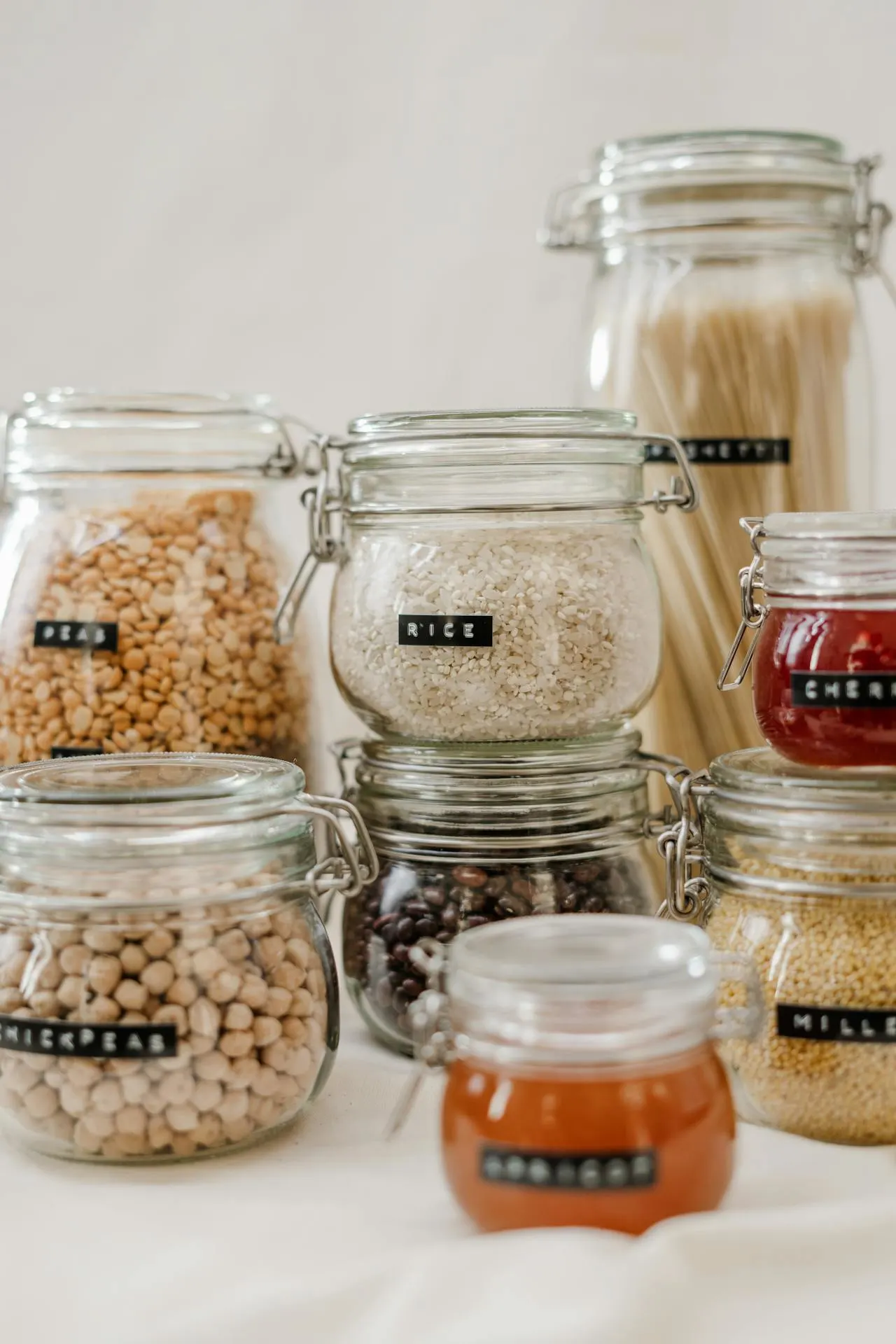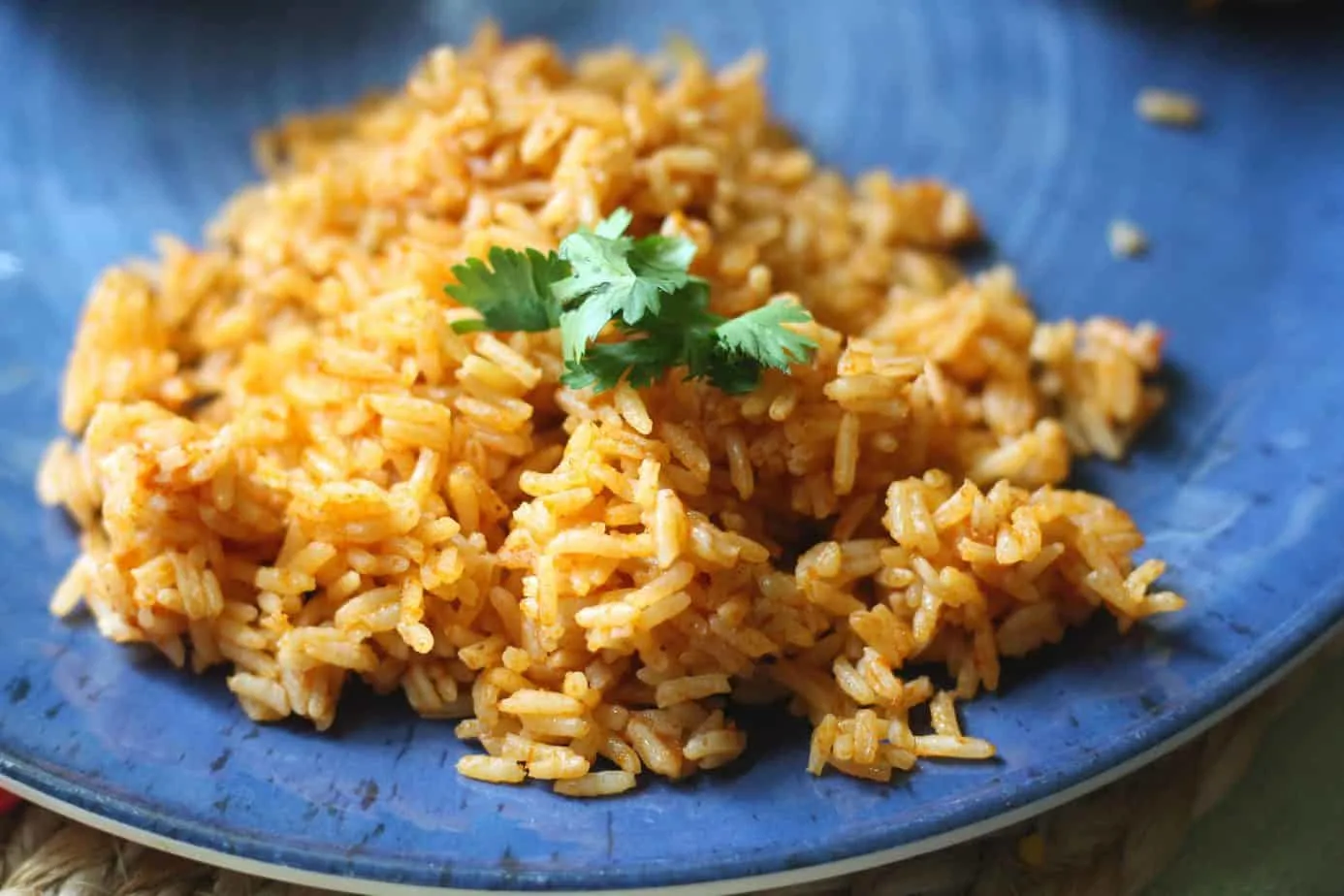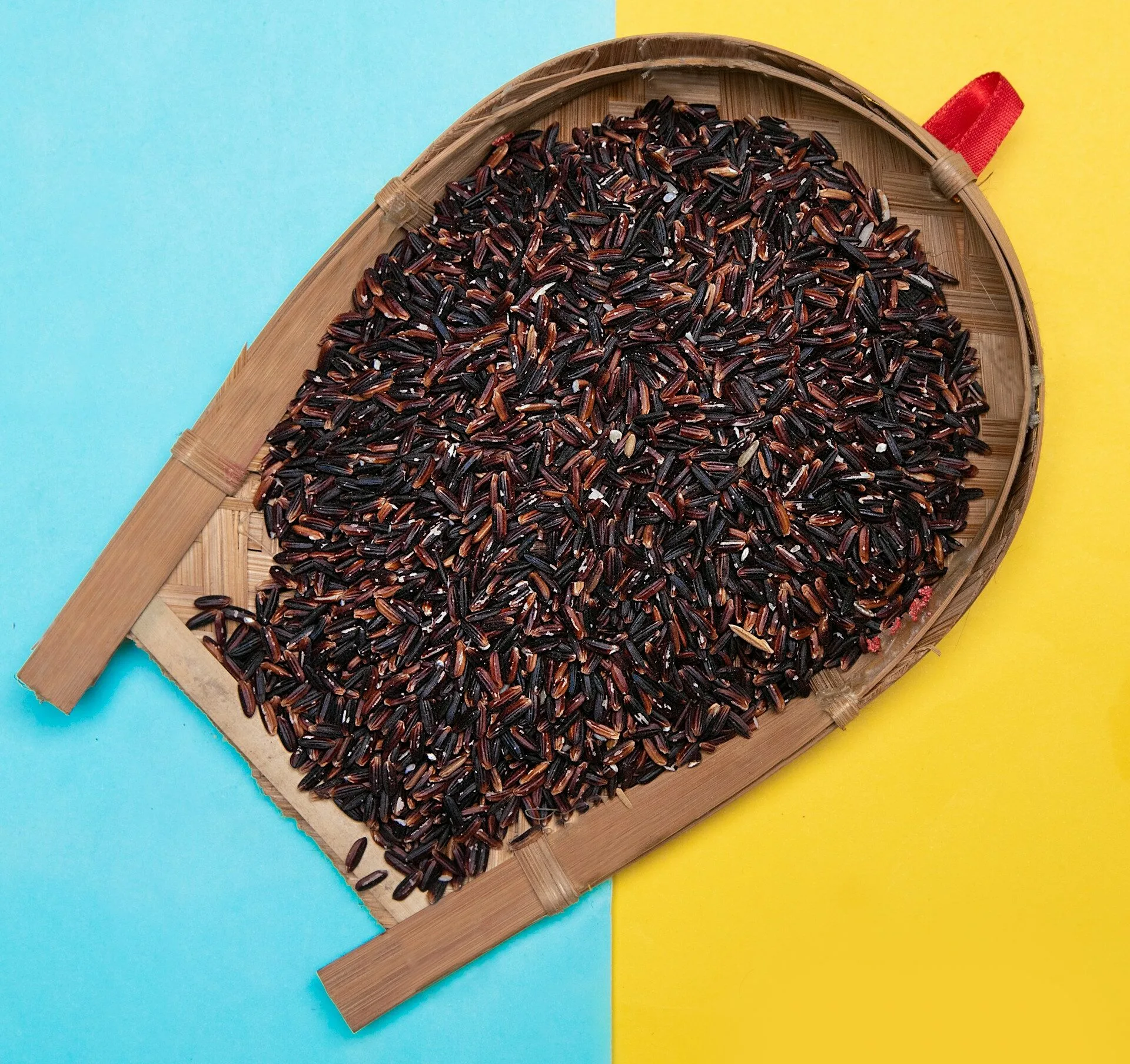Navigating the vast array of rice varieties in the grocery store aisle can be daunting. From long grain to short grain, white to black, understanding the differences and uses of each type of rice is key to perfecting your meals. This guide simplifies the world of rice, helping you choose the right variety for every dish.

Photo by Polina Tankilevitch
Understanding rice length
Before getting into the different varieties of rice, it’s important to understand the basics — rice length.
Rice is categorized into three primary lengths:
- Long grain — known for its light, fluffy texture, with grains that remain distinct and separate after cooking. Popular long-grain varieties include jasmine and basmati.
- Medium grain — this length cooks into a moist and tender consistency. Arborio and carnaroli are popular medium-grain rice types.
- Short grain — tends to clump together, creating a sticky or glutinous texture, despite all rice varieties being naturally gluten-free. The term glutinous in this context refers to the glue-like quality of the rice, not its gluten content. Glutinous rice, Chinese black rice and Bomba rice are popular short-grain varieties.
Popular types of rice
The plethora of rice varieties can be overwhelming, but there's no need to memorize them all. This list highlights the most frequently used types of rice, their ideal culinary uses and some delicious recipe options to experiment with in your kitchen.

Photo by cottonbro studio
Basmati rice
This is a long-grain Asian indica variety renowned for its light, nutty flavor and distinct floral aroma. Basmati rice comes in both white and brown varieties. Traditionally cultivated in the Himalayan foothills, it is a staple in Indian and Pakistani dishes like biryani, kheer, and various curries like lamb korma.
Basmati grains are long and slim. They can triple in length when cooked and are known for remaining slender and separate, making them ideal for stuffing, rice salads and desserts like the traditional arroz con leche.
To enhance its flavor and reduce cooking time by 20%, soaking basmati rice for 30 minutes before cooking is recommended. This variety, including the U.S.-grown Texmati, is perfect for absorbing flavors in savory and sweet dishes alike, making it a versatile choice for a wide range of recipes.
Jasmine rice
Like basmati, jasmine rice is a popular long-grain variety primarily grown in Thailand and Cambodia, lending itself well to Thai and Southeast Asian cuisine. It is characterized by a nutty and pleasantly aromatic profile, with a floral scent that gives it its name.
While the grains are slightly shorter than basmati rice, jasmine rice is versatile enough to be used interchangeably in recipes. This rice cooks up moist with a soft texture, making it perfect for dishes that pair well with its distinct flavors, such as coconut rice, Mexican rice, Mexican ground beef skillet or a chicken and rice casserole. Available in both white and brown varieties, jasmine rice is commonly used as a side for meats, fish and stir-fries and is a key ingredient in dishes like pilafs, rice salads and fried rice.

Wild rice
Contrary to its name, wild rice is not actually rice but a type of grass. It’s predominantly found in shallow waters of lakes and slow-flowing streams across North America, including the Great Lakes region and parts of Canada. Distinguished by a chewy outer sheath and tender inner grain, wild rice is rich in protein and fiber and has a low glycemic index.
Available in varieties such as Northern wild rice, Texas wild rice and Manchurian wild rice, it's commonly used in side dishes, salads, soups and as a chewier alternative to bread in stuffings. Wild rice lends a nutty, earthy flavor to dishes, but cooking it requires patience, as it's a tough seed that absorbs water slowly and can take up to an hour to cook fully. It's best prepared like pasta, boiled in plenty of salted water, and it expands to triple its size when cooked, so portioning is key.
Arborio rice
This Italian short-grain rice and its companion, carnaroli rice are best known for making creamy Italian risotto and arancini, although they’re perfect for rice pudding, too. This rice variety is short and stubby, and thanks to its high starch content, it offers a luxuriously creamy texture when cooked.
Fun fact: Don't rinse arborio or carnaroli rice before cooking. You need those starches for the perfect creamy risotto.
It's not just an Italian thing either; you'll find arborio rice grown in places like California and Texas. Cooking it is a bit of an art: Add liquid slowly and cook it just enough to keep it al dente. It's a bit of a wait, but totally worth it for that creamy, decadent bite.

Photo by Sanjoy Sadhukhan
Black rice
Distinct from wild rice despite looking similar, black rice is a unique variety of the Oryza sativa L. Often called forbidden rice, it gets its striking black color from anthocyanin, the same antioxidant found in blueberries and blackberries. Renowned for its high protein and iron content, black rice is almost always whole grain and delivers an earthy, nutty flavor. It typically requires about an hour to cook. This variety, akin to other long-grain rice, works wonderfully in dishes like tofu and veggie bowls.
Glutinous rice
This type of rice, known for its softness and high starch content, is ideal for dishes requiring a compact and sticky texture, like sushi or onigiri. Although glutinous rice is often used interchangeably with Japanese glutinous rice, the Japanese variety is only one type of glutinous rice; there are many others. To cook sticky rice properly, steaming it in a bamboo basket after a long soak — preferably overnight — is best.
Brown rice
Any type of rice can have a brown rice variant; it's simply the same grain with the outer hull intact. This makes it a whole grain, lending a nuttier flavor and chewier texture.
Because brown rice is a whole grain, it takes longer to cook than white rice. With the bran and germ intact, brown rice has a hearty, nutty taste and texture.
"I love using brown rice when I cook, not only because it's higher in fiber than white rice and therefore keeps me full longer, but also because of the chewy texture. The only thing I don't love about brown rice is how long it takes to cook, so I usually keep a couple packets of 90-second microwave brown rice in the pantry for days when I'm in a hurry."
— Anne Mauney, MPH, RD, fANNEtastic food
The last word on rice
As you can see, there’s a lot more than basmati in the world of rice. From fluffy jasmine to unique and exotic black rice, there’s a variety for any occasion. Whether you’re making a creamy risotto or serving with your favorite curry, there’s a type of rice perfect for your dish.
Gina Matsoukas is the writer, photographer and recipe creator of Running to the Kitchen. Focusing on healthy, seasonal, whole-food recipes, her work has been featured in various online and print publications including Food Network, Prevention Magazine and Women’s Health. Gina lives in central New York, where she enjoys an active outdoor life.
This article originally appeared on Food Drink Life.
